Exploring Belgium's High Fens
Belgium’s highlands are incredible! This natural reserve, with its woodlands and meadows, is a captivating place to visit. it’s a multifacetet ecosystem that changes drastically from one season to the next. In this short article, you’ll discover a small part of it on a windy and cold day in February.
Back to the roots
Exploring Belgium’s High Fens with my family was a rewarding experience. It’s a return to my roots, as I grew up very close by. As I rather took my bike as a child, hiking through the High Fens with my camera at hand is kind of a new experience for me too. During late winter, the High Fens are a barren landscape. The brown grass contrats very nicely with the blue sky above on a sunny day. We were lucky to have just such a day on our recent visit. If not for the low temperatures and windswept paths, you could almost imagine yourself walking through Africa’s Serengeti plains.
Hikes in the High Fens are great, though note that some paths are not always clearly marked and you may get wet feet in some areas, as the fragile peat surface breaks easily. We had to improvise a few times to cross some boggy stretches during our nearly 9 kilometre hike.
Cycle of nature
On my recent visit to the High Fens, I wanted to explore a very particular part of it I had never seen before. It was only ‘created’ long after I moved away after a devastating forest fire destroyed 1300 hectares of land in 2011, a quarter of the total surface of the reserve! Thankfully nature has a tendency of bouncing back. The resulting landscape feels historically significant, demonstrating how a period of violence is followed by a period of peace. This cycle is ever-present in nature and clearly visible in Belgium’s High Fens.
The vast marshes in the High Fens feature many scorched tree stumps which have resisted decomposition through the unique acid chemical nature in the area.
Ghosts of the moor
While most of the ground surface of the burnt-down stretches of land recuperated nicely over the last decade, the same cannot be said for the trees that once stood proud on these lands. The area of Noir Flohay is of particular interest, as the largest remaining trees still stand tall in this place. Dead pine trees that were planted over half a century ago appear as ghostly figures among the vast, mostly flat and empty landscape. Some of these trees are reminiscent of the lifeless trees in Namibia’s Deadvlei marshes.
The dead pine trees of Noir Flohay in Belgium’s High Fens tell a story of resilience after death.
Long stretches of the hikes in the High Fens are on wooden paths that cross the bog.
For more information about the High Fens and hikes through the area, you may consult the region’s official website.




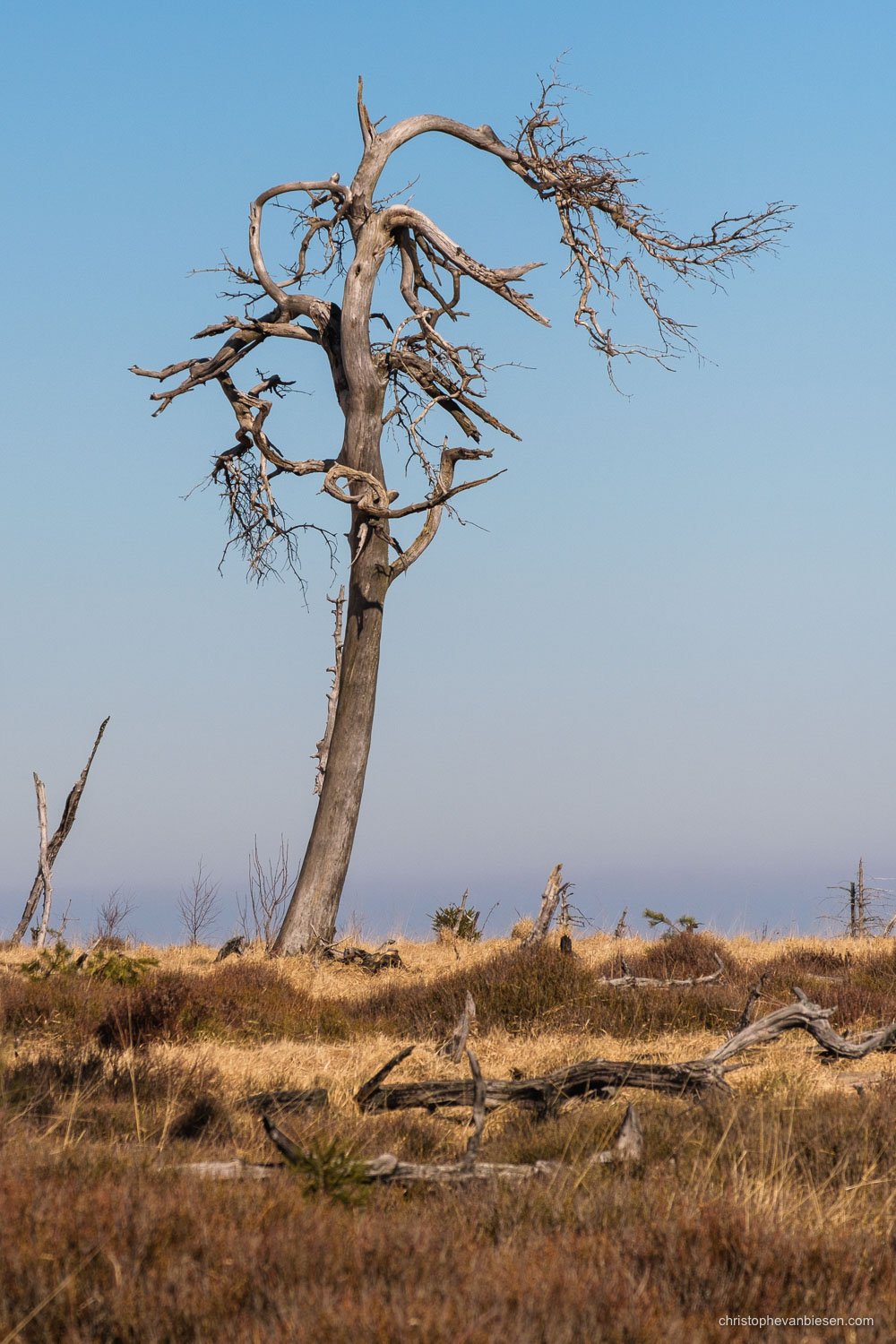
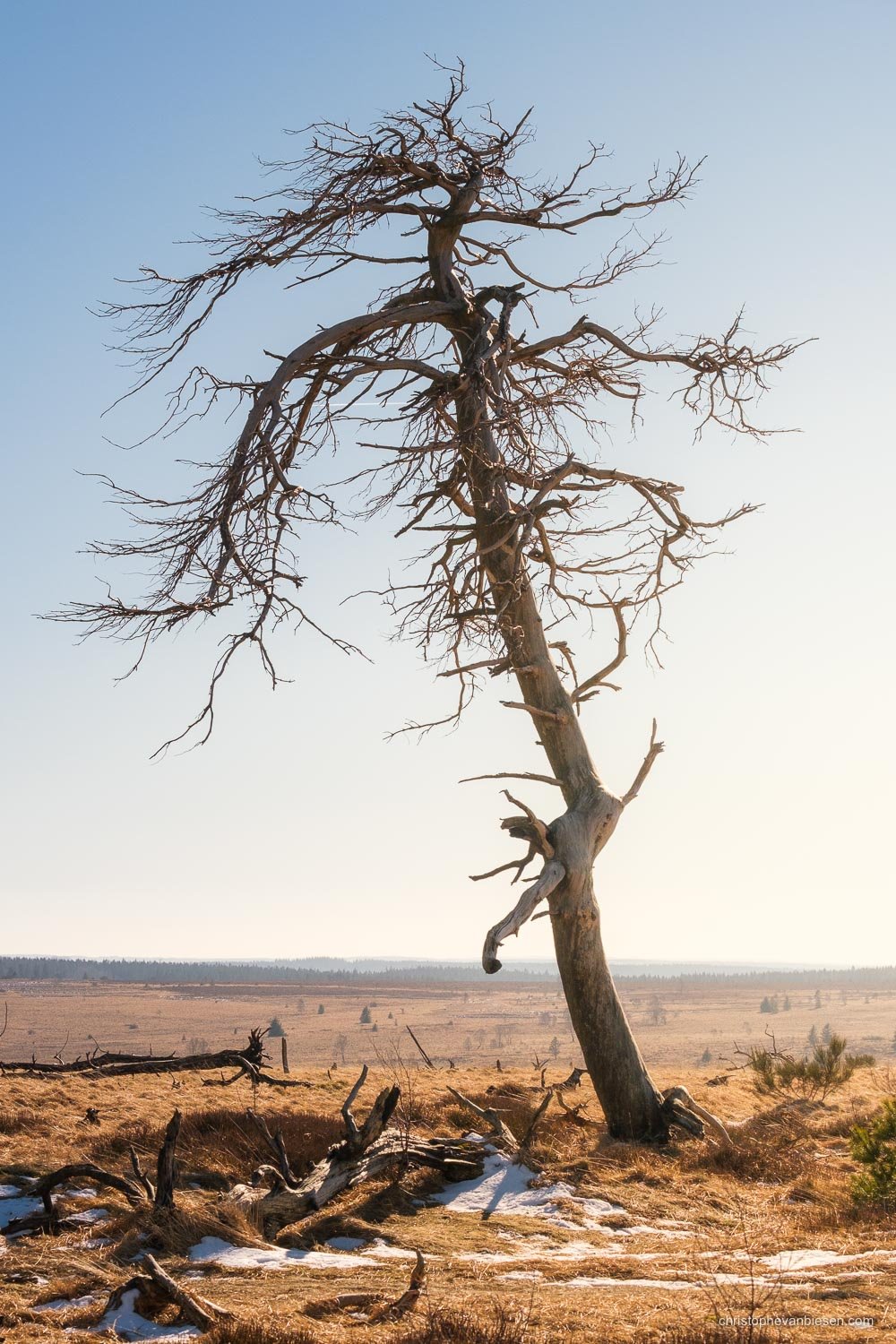
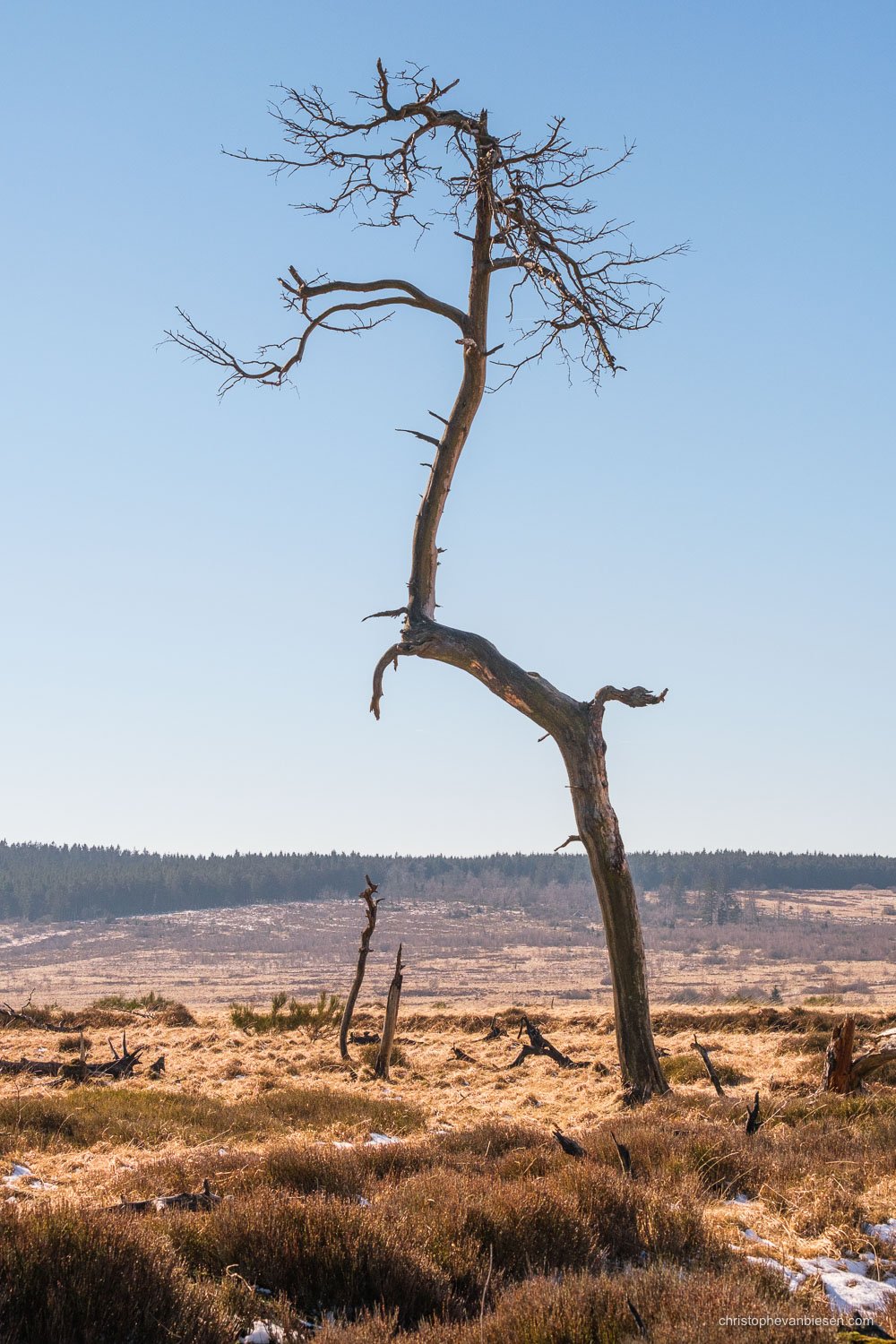
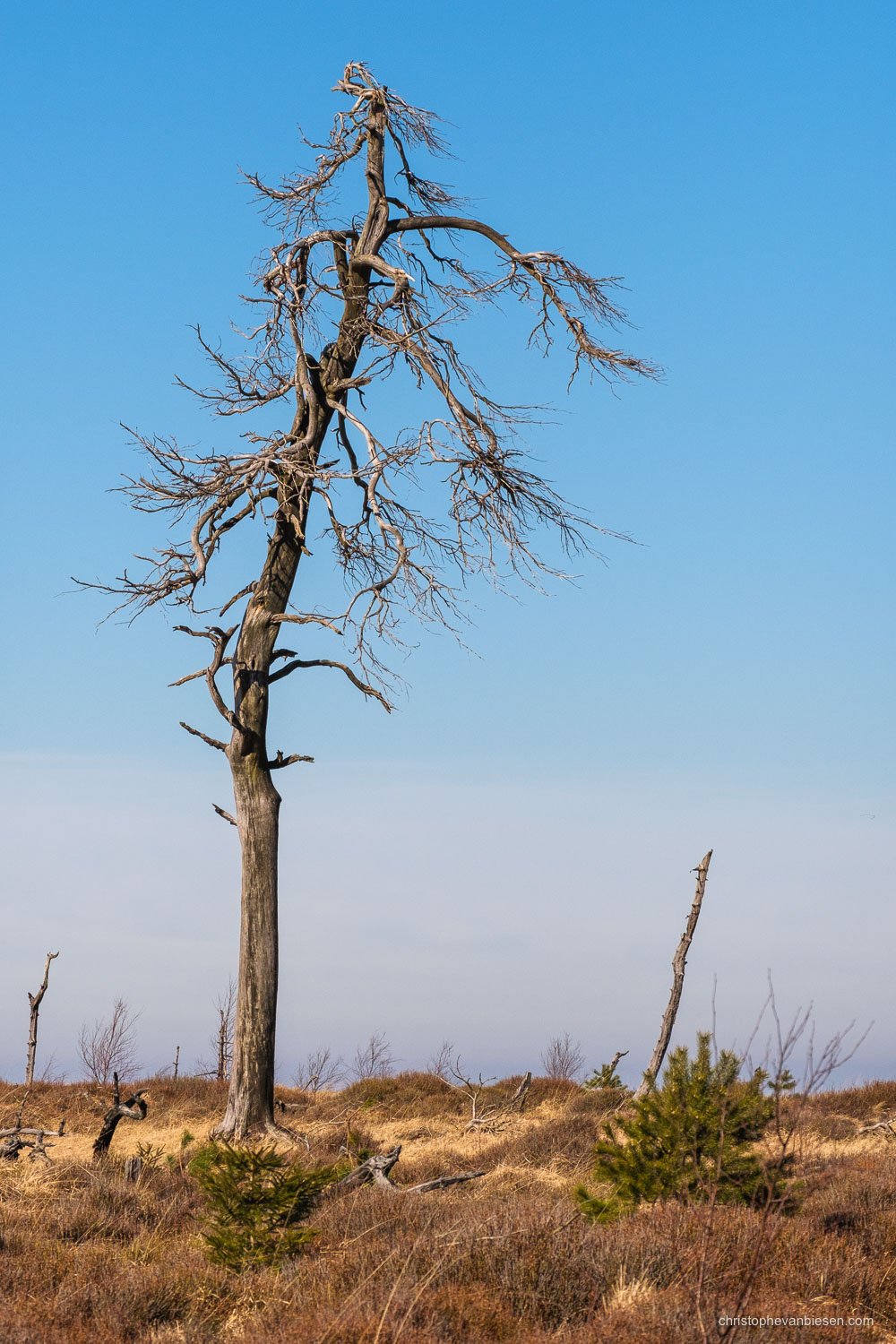
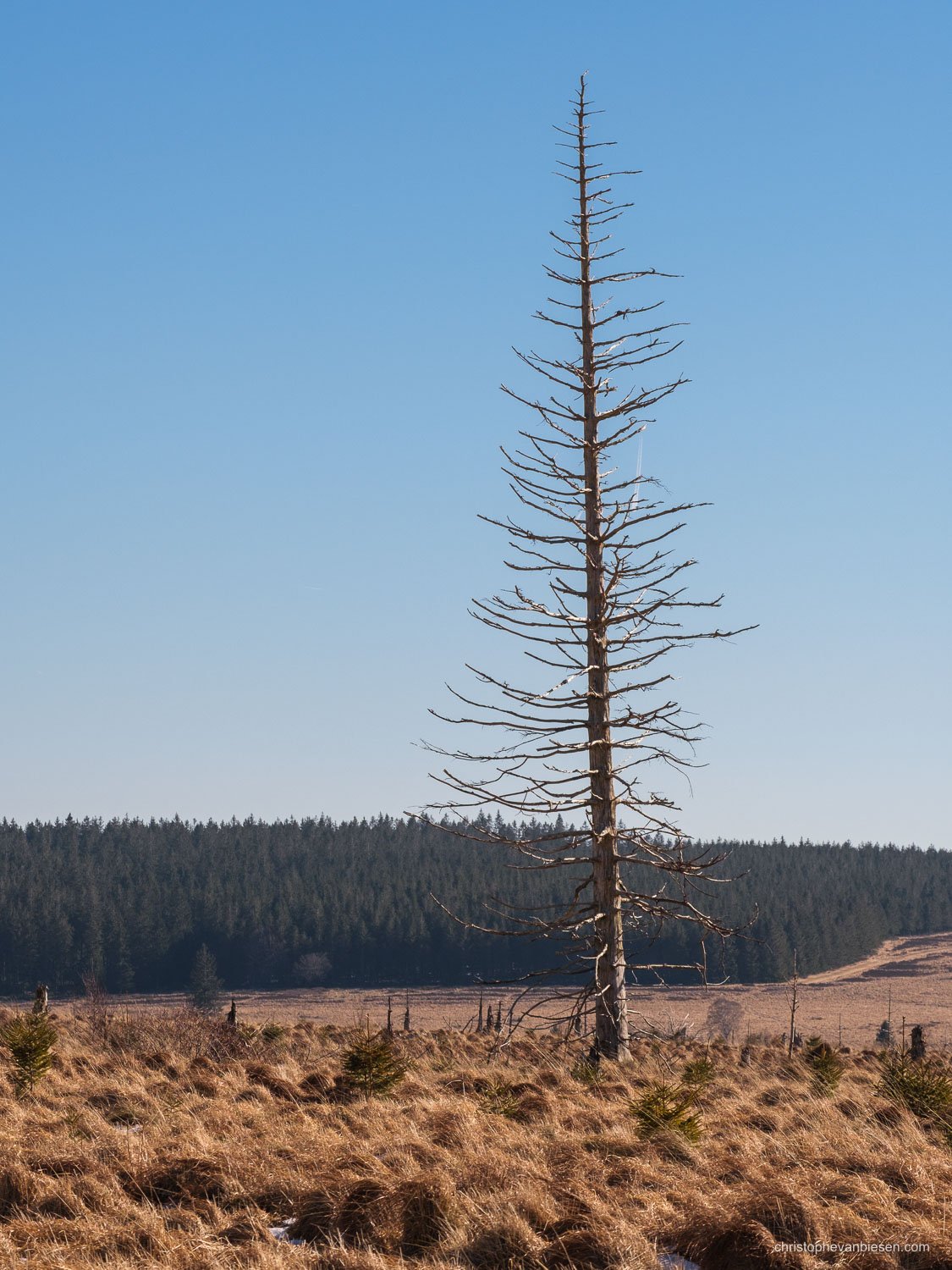
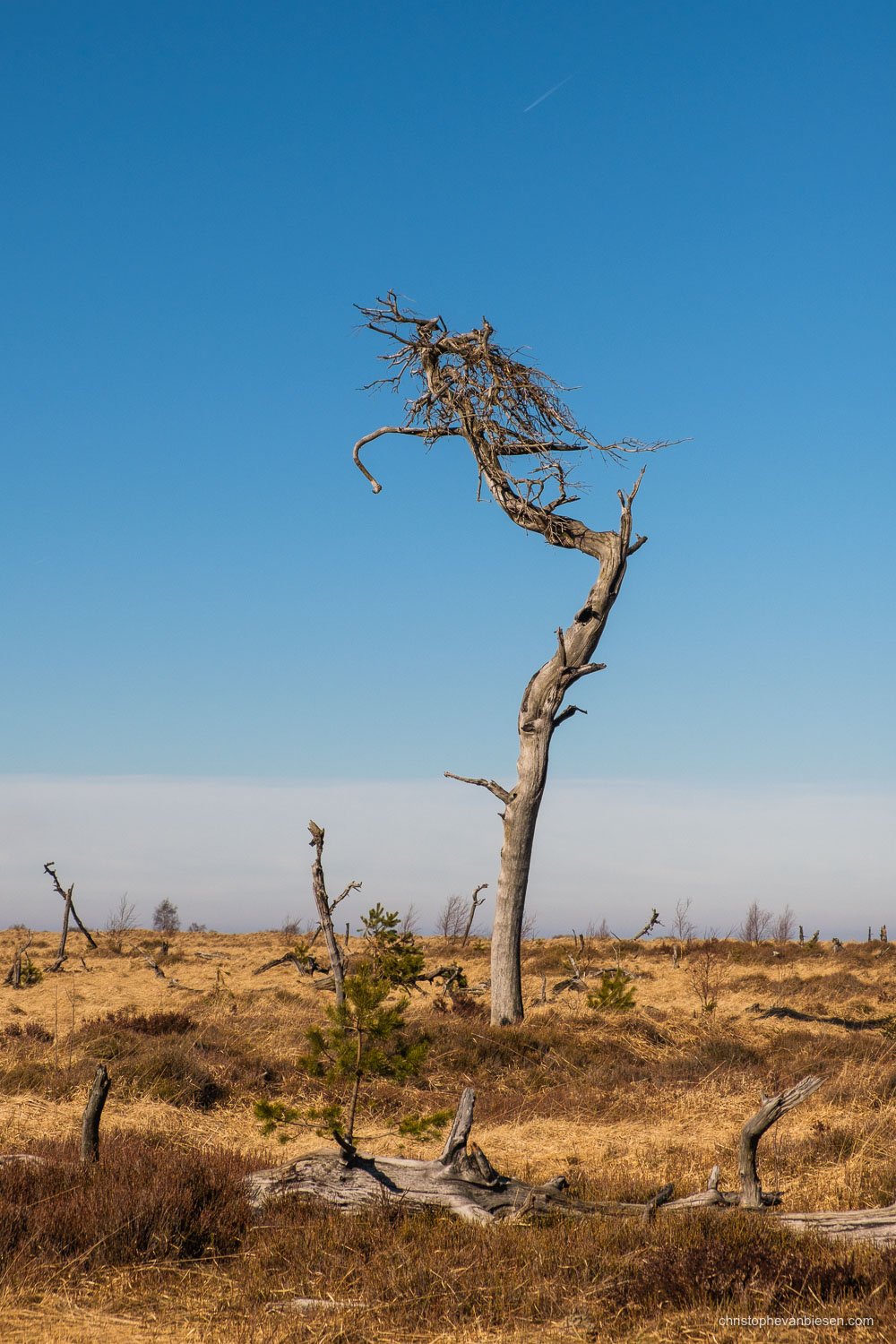


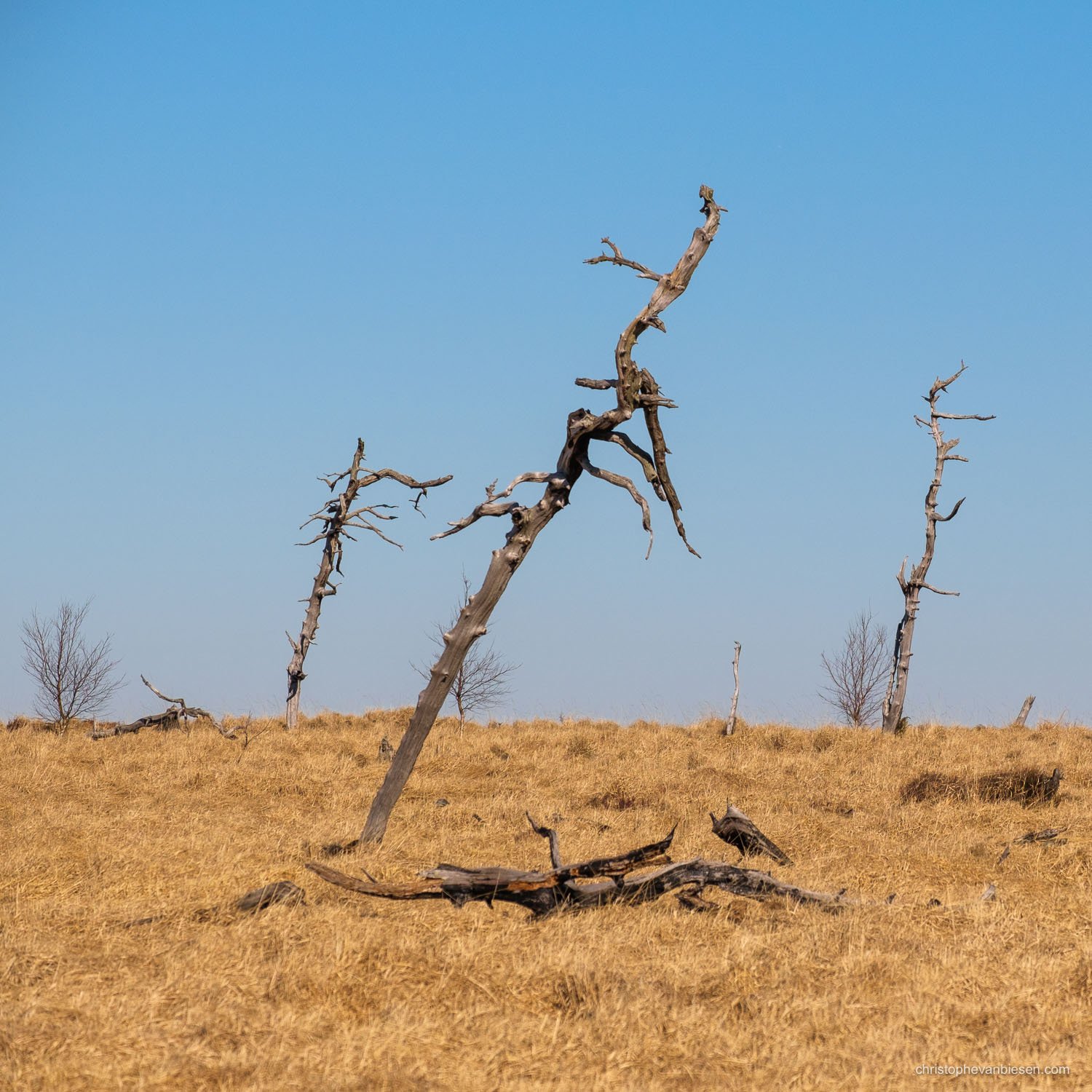









Belgium’s High Fens provide ample opportunities to create interesting landscape photography.